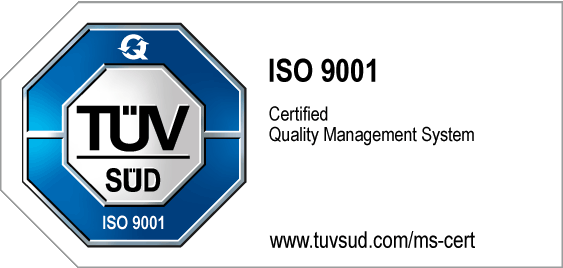Disruptive Innovation: Redefining Markets and Shaping Future Opportunities
Disruptive innovation allows companies to break into new markets and outpace established competitors by offering simpler, more affordable solutions. This approach provides competitive advantages, fosters innovation, and creates long-term growth opportunities.
Disruptive Innovation – At a Glace
| Significance and Application: | Disruptive innovation refers to a breakthrough technology or business model that fundamentally alters an existing market by creating new value networks, often displacing established competitors. Its significance lies in its ability to democratize access to products or services, making them more affordable or accessible, and fostering long-term economic growth and innovation. |
| Conducting Disruptive Innovations: | Disruptive innovation occurs when companies initially develop simple, often low-cost solutions that target niche or underserved audiences. Over time, these solutions are improved and penetrate the mass market, gaining market share and displacing established providers and their more complex, expensive products. |
| Advantages: | The advantages of disruptive innovations include the ability to create new markets and opportunities, often by offering more affordable or accessible alternatives to existing products. They also drive competition and encourage established companies to innovate, leading to overall industry growth and improvement. |
| Weaknesses and Challenges: | Weaknesses of disruptive innovations include the high uncertainty and risk involved, as they often face resistance from established markets and regulatory hurdles. Additionally, they can be difficult to scale initially, and their success is not guaranteed, making them challenging for early investors and adopters. |
What is Disruptive Innovation?
Disruptive innovation is a transformative process where new products or services initially target niche segments within an existing market. These innovations start with simpler, more accessible, or cost-effective solutions that appeal to underserved or overlooked customers. Over time, they evolve and attract a wider audience, often challenging and eventually displacing established companies. Through Innovation Management, businesses systematically develop and refine these disruptive solutions, enabling them to adapt and thrive in shifting competitive landscapes and meet changing market demands more effectively.
Definition: Disruptive
The word “disruptive” refers to something that causes significant change or disturbance, often by interrupting the normal course of an activity, system, or market. In a business context, it describes innovations or technologies that challenge the status quo, often leading to the displacement of established players. It can have both positive and negative connotations, depending on the impact of the disruption.
Definition: Innovation
Innovation refers to the process of creating and implementing new ideas, products, or methods that bring improvement or solve problems in a novel way. It can involve both incremental advancements and groundbreaking changes that transform industries or societies. Innovation is essential for progress, as it drives competitiveness, efficiency, and adaptability in a constantly evolving world.
The Disruptive Innovation Theory of Clayton M. Christensen
Clayton M. Christensen’s Disruptive Innovation Theory explains how smaller companies with fewer resources can challenge established businesses by introducing simpler, more affordable products or services that initially target niche or underserved markets. Over time, these innovations improve in quality and performance, eventually appealing to customers and displacing incumbent firms. The theory emphasizes that disruption doesn’t happen instantly but through a gradual process of market evolution and innovation.
Key Characteristics of Disruptive Innovation
Key characteristics of disruptive innovation include starting in niche or underserved markets with a product or service that is often lower in performance but more affordable or convenient than existing offerings. It typically improves over time, eventually becoming good enough to attract general public. Disruptive innovation also forces established companies to adapt or risk being displaced as the market shifts toward the new solution.
Understanding Disruptive vs. Sustaining Innovation
Disruptive innovation introduces a new product or service that starts by serving a small or overlooked market, eventually transforming the entire industry by displacing established competitors. In contrast, sustaining innovation focuses on improving existing products or services within the same market, helping established companies maintain their competitive edge. While sustaining innovation enhances the status quo, disruptive innovation fundamentally changes the market landscape over time.
Disruptive Innovation Across Different Industries
Disruptive innovation has transformed numerous industries by introducing new technologies, business models, or services that challenge the status quo. In each case, these innovations typically began in niche markets, offering solutions that were simpler, cheaper, or more accessible, and eventually gained traction in the mainstream, often displacing established players.
1) Technology (Personal Computing and Smartphones)
One of the clearest examples of a disruptive technology is the personal computer. Initially, mainframe computers dominated the industry, serving large businesses and organizations with high costs and complexity. The introduction of personal computers by companies like Apple and IBM in the 1970s and 1980s, offering cheaper, user-friendly alternatives, disrupted the market. Later, smartphones further revolutionized the industry by making computing more mobile and accessible to a wider audience, eventually replacing many functions of both personal computers and other consumer electronics.
2) Transportation (Ride-Sharing and Electric Vehicles)
The transportation industry has experienced disruptive innovation through companies like Uber and Lyft, which challenged traditional taxi services. These platforms leveraged smartphone apps to offer more convenient and often cheaper ride-hailing services, which eventually disrupted local taxi industries worldwide. Electric vehicle (EV) makers like Tesla have also disrupted the automotive industry by challenging the dominance of internal combustion engine vehicles, focusing on sustainability, and pushing established automakers to rethink their product lines and embrace electric mobility.
3) Retail (E-commerce and Online Marketplaces)
Traditional brick-and-mortar retail has been significantly a disruptive technology by e-commerce platforms such as Amazon and Alibaba. These companies revolutionized how consumers shop by offering vast product selections, convenience, and competitive pricing, often at the expense of traditional retail giants. Online marketplaces and direct-to-consumer brands continue to transform retail by leveraging technology, changing consumer expectations, and disrupting traditional supply chains.
4) Media and Entertainment (Streaming Services)
The rise of streaming platforms like Netflix, Hulu, and Spotify disrupted the traditional media and entertainment industries, particularly television, film, and music. These platforms offered on-demand access to content, changing how people consume media. As a result, traditional cable TV and physical media sales (e.g., DVDs and CDs) have sharply declined. Streaming services also changed content production models, with platforms investing directly in original programming and music, further disrupting the traditional entertainment value chain.
5) Healthcare (Telemedicine and Personalized Medicine)
In healthcare, disruptive technologies such as telemedicine have altered how care is delivered. Telehealth platforms have made it easier for patients to access medical consultations and care remotely, particularly during the COVID-19 pandemic. Meanwhile, advancements in personalized medicine, including genetic testing and targeted therapies, are disrupting traditional one-size-fits-all treatment models, offering more individualized and effective care.
6) Finance (Fintech and Cryptocurrencies)
The financial services industry has seen as a disruptive technology through fintech innovations such as peer-to-peer lending, mobile payment systems, and robo-advisors. These technologies have democratized access to financial services, allowing consumers and businesses to bypass traditional banks and financial institutions. Cryptocurrencies, like Bitcoin, represent another form of disruptive innovation, challenging traditional fiat currencies and payment systems with decentralized, digital alternatives.
7) Education (Online Learning and EdTech)
The education industry has been disrupted by online learning platforms like Coursera, Khan Academy, and edX, which offer free or low-cost access to high-quality educational resources from anywhere in the world. This has made education more accessible, particularly for people in remote areas or those who cannot afford traditional schooling. The rise of edtech and virtual learning platforms, accelerated by the pandemic, is transforming how education is delivered and accessed globally.
5 Examples of Disruptive Innovation
Here are five prominent examples of disruptive innovation that have significantly altered their respective industries:
- Netflix: Initially a DVD rental service, Netflix disrupted the existing market for video rentals, particularly affecting leading companies like Blockbuster. By introducing a subscription-based streaming model, Netflix allowed users to watch movies and TV shows on-demand without late fees, fundamentally changing how people consume entertainment. As a result, it has become a dominant force in media production and consumption, shifting the industry towards streaming services.
- Airbnb: Founded in 2008, Airbnb transformed the hospitality industry by allowing individuals to rent out their homes or spare rooms to travelers. This peer-to-peer model offered unique and often cheaper accommodation options compared to traditional hotels, which faced increased competition from this innovative platform. Airbnb’s success has prompted many leading companies in the hospitality sector to rethink their business models and adapt to the sharing economy.
- Uber: Uber disrupted the transportation sector by introducing a ride-sharing app that connects drivers with passengers. This model challenged traditional taxi services, which relied on medallions and fixed fares. By offering convenience, lower prices, and ease of use, Uber transformed urban transportation, prompting regulators and traditional taxi services to adapt to the new landscape of personal mobility.
- Spotify: Spotify revolutionized the music industry by offering a subscription-based streaming service that provides access to a vast library of songs for a monthly fee. This model challenged traditional music sales, including physical albums and digital downloads, leading to a decline in CD sales and altering how consumers access and enjoy music. Spotify’s impact forced record labels and artists to rethink their distribution and revenue strategies, addressing shifts in existing technology to reach consumers through streaming.
- Tesla: Tesla disrupted the automotive industry by popularizing electric vehicles (EVs) and integrating advanced technology, such as autonomous driving features, into its cars. While electric vehicles were an existing technology, Tesla’s focus on performance, design, and sustainability helped shift consumer perceptions and demand toward EVs. Tesla’s success compelled traditional automakers to accelerate their electric vehicle development efforts, reshaping the future of transportation.
Frequently asked questions and answers
Disruptive innovation refers to a process where a new product, service, or technology starts by targeting a niche or underserved market and eventually disrupts existing markets, displacing established competitors. This type of innovation typically offers simpler, more affordable, or more accessible alternatives that improve over time, ultimately reshaping industry dynamics.
An example of disruptive innovation is Netflix, which initially began as a DVD rental service but transformed the entertainment industry by introducing a subscription-based streaming model. This shift allowed users to access a vast library of movies and TV shows on-demand, ultimately displacing traditional video rental stores like Blockbuster and changing how audiences consume content.
Two types of disruptive innovations are low-end disruption and new-market disruption. Low-end disruption occurs when companies target less demanding customers with simpler, cheaper products or services, while new-market disruption involves creating entirely new markets by addressing the needs of underserved or non-consumers, thereby attracting a different customer base and reshaping industry dynamics.
In the context of innovation, disruption refers to a significant change that alters the competitive landscape of an industry, often caused by new technologies, products, or business models that challenge and displace established players. This disruption can lead to shifts in consumer behavior, market dynamics, and industry standards, forcing incumbents to adapt or risk losing their market position.
The difference between innovation and disruptive innovation lies in their impact on the market: innovation generally refers to any new idea, product, or method that improves or adds value, while disruptive innovation specifically refers to innovations that fundamentally alter industries by displacing established products or services. Disruptive innovations often start in niche markets and eventually attract mainstream customers, leading to significant shifts in market dynamics, whereas regular innovations may enhance existing offerings without necessarily changing the competitive landscape.
Sources:
- Christensen, Clay, Michael E. Raynor, and Rory McDonald. Disruptive innovation. Brighton, MA, USA: Harvard Business Review, 2013.
- Si, Steven, and Hui Chen. “A literature review of disruptive innovation: What it is, how it works and where it goes.” Journal of Engineering and Technology Management 56 (2020): 101568.


